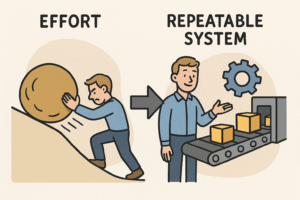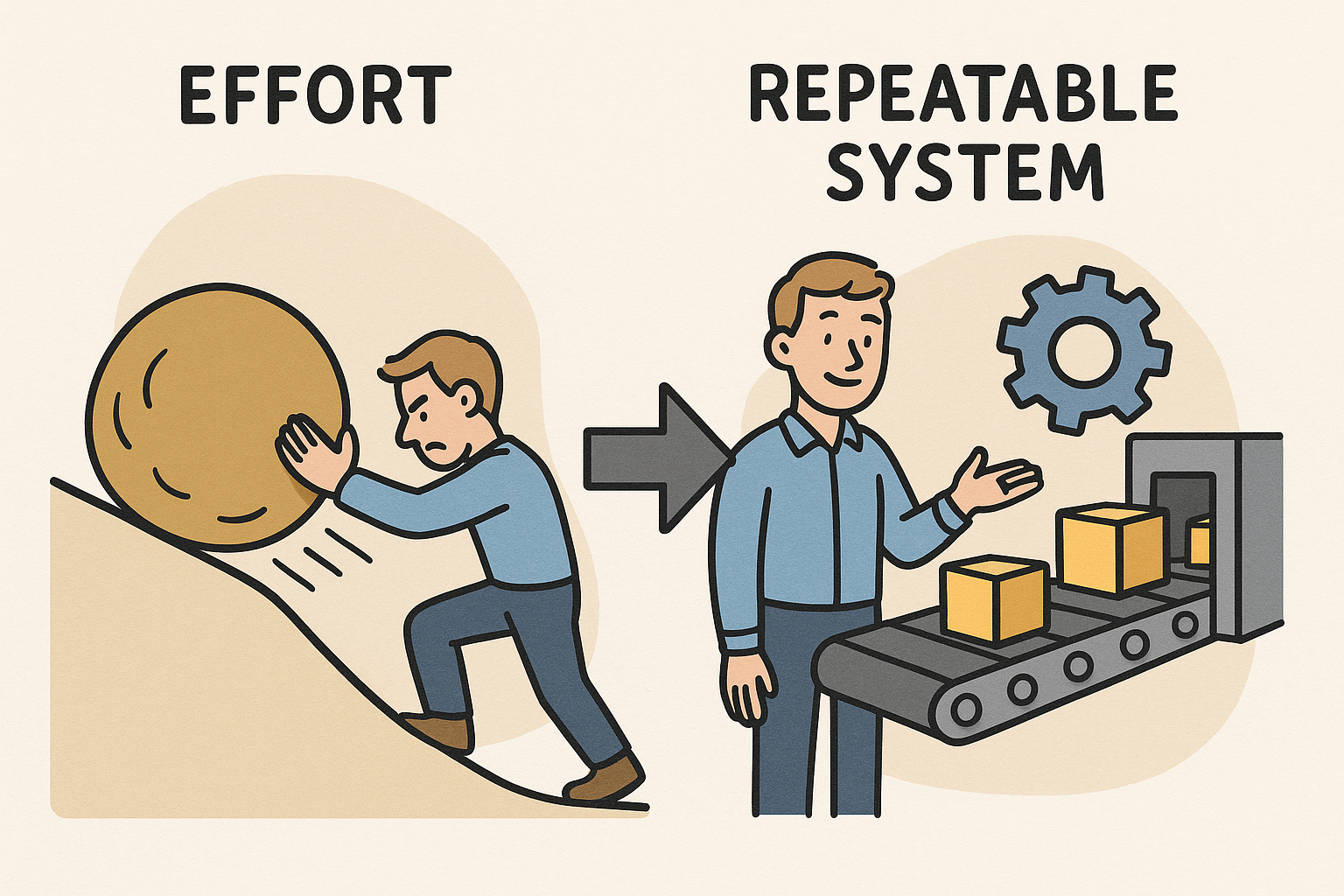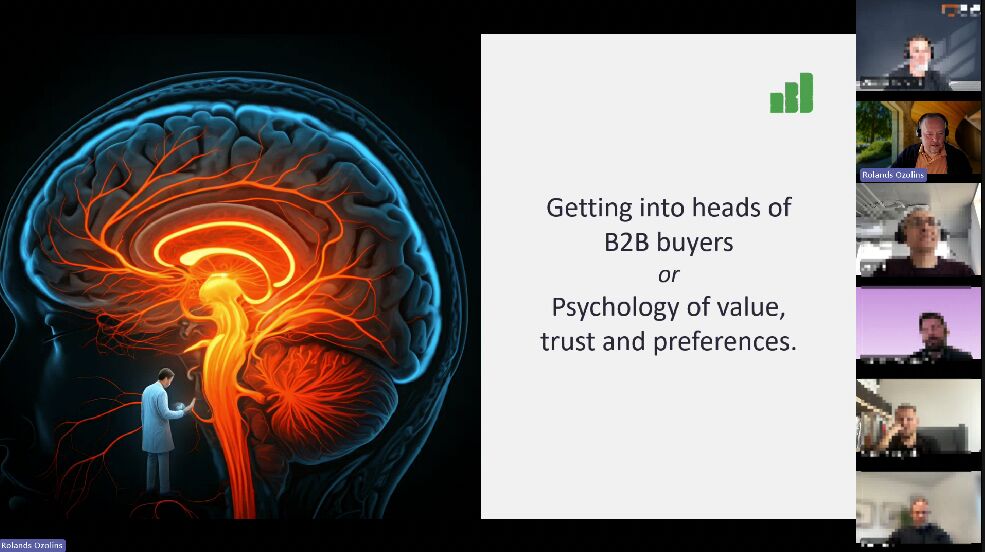This blog was edited and updated on 17.07.2023.
For many tech companies, international expansion is the next logical thing. But which market to go to?
In many cases, international expansion is inevitable, as companies with high specialization often cannot finance themselves with the revenue from the small local market only and be able to invest and remain competitive.
Changing buyer’s behaviour and ubiquitous use of the internet has made international expansion easier than ever before.
However, even if your product is digital and delivered as a service, not all markets are the same.
I believe many companies choosing to go to the US or UK market in the first place are making a grave mistake.
And unfortunately, often they are guided in this direction by their very own investors – venture capitalists.
Those who are located in the US and UK would greatly benefit from going outside their home markets.
Just think about it – if you are able to profitably generate demand in these markets, what you could do in less expensive geographies!
Let me explain.
What is the actual cost of international expansion in B2B?
Digital marketing is probably the greatest thing after the European Union that happened in terms of impact on international trade.
Companies now can target a very specific audience who are interested in their products. As a result, marketing can generate qualified leads – contacts who have shown interest in your offerings.
However, the cost of digital marketing is set by auction.
Many advertisers bid for their ads to be shown to the respective audience; however, advertising space (think banner space on websites or LinkedIn) is limited.
As a result, the more competition – the higher the cost.
Up to the level that companies cannot recoup the cost of customer acquisition.
Ever.
How much does a qualified SaaS lead cost?
A key to understanding the cost of marketing is understanding how much a lead costs.
Let’s do some basic mathematics here.
CPC is a cost per click on an advertisement that takes the user to the respective website. And it is often used as a fair indicator of the cost of marketing.
CR is the conversion rate. It is used to calculate a the percentage of users performing the desired action, e.g. completing registration for a webinar or booking a consultation call.
Lead costs = CPC/CR
The average conversion rate on landing pages for business software SAAS products is 2%.
Essentially – only 1 out of 50 visitors registers.
Now put CPC into the equation.
According to Wordstream research, the average CPC in B2B is 3,33 USD.
So on average Business Software market, a lead would cost then around 166,5 USD.
Does it mean this person will end up becoming a paid customer?
No, it doesn’t.
I estimate that on average, only around 30% of leads would be qualified by marketing, and perhaps 50% of these would be further qualified by sales as Sales Qualified Leads (SQL).
So we end up with each Sales Qualified Lead costing us 1100 USD.
Yes. 1100 USD.
Can we be sure we actually sell to SQLs?
Of course not.
Here again, I estimate that a business would close 10-20% of SQLs. This means that direct advertising costs for each deal closed would range from 5500 – 11000 USD.
Can your company stomach that?
What if, in your product category, CPC cost is 10 USD?
What if it is 25?
Think about it.
Or better, investigate well before committing to business in the respective market.
How to manage the costs of SaaS customer acquisition?
In essence, there are three ways to manage costs.
Improving marketing and sales pipeline management
Today, growing companies must be obsessed with managing their marketing and sales pipelines to optimize lead generation, deal closure rates and sales velocity (the time it takes to close the deal).
It is essential to understand that marketing and sales are both responsible for the same thing – optimizing the pipeline.
Before we go into pipeline examples, I must stress that pipelines and conversion rates will differ from industry to industry and from one company to another.
The examples below are only used to illustrate the principle.
Let’s now look at a couple of examples.

As you can see, the advertising cost of every deal closed is 4155,67 euros. As the Lifetime Value of an average deal is 50 000 Eur, we can easily manage this kind of cost. At the end of the day, our advertising costs are 9,3% of revenue, something many companies can live with.
Let’s assume that the company has done a better GTM Strategy and can target its advertising messages and marketing content more precisely. As a result, the conversion rate on the landing pages is reaching 5% (up from 2%), and because of more precise targeting, now 35% (up from 30%) of leads are qualified as Marketing Qualified Leads.
We leave anything on the sales part of the pipeline unchanged, and we do not change the advertising budget as well.
And voila!

Just by doing those two changes, the company was able to:
- Generate more than 3000 extra leads
- Reduce cost per lead from 150 to 60 Eur
- And increase revenue by 4,6 Million Eur
You just saw the marketing team becoming superheroes!
But is this a realistic example?
In terms of improvement, it is.
There are many options to explore, starting from deeper buyer research and strategy to extensive AB testing to purchasing detailed account lists for Account-Based Marketing.
However, in more practical terms, it is not.
You see – every lead, unless it is 100% self-service product, requires specific work from the sales team, presales engineers and, after the deal is done, implementation and support teams.
The company is not likely to be able to increase these teams fast enough.
It will probably opt to save on its marketing budget while increasing its employees to meet newly unlocked demand once ready to handle it.
International expansion to less costly markets
Another option is to go to markets with less competition and hence less advertising costs.
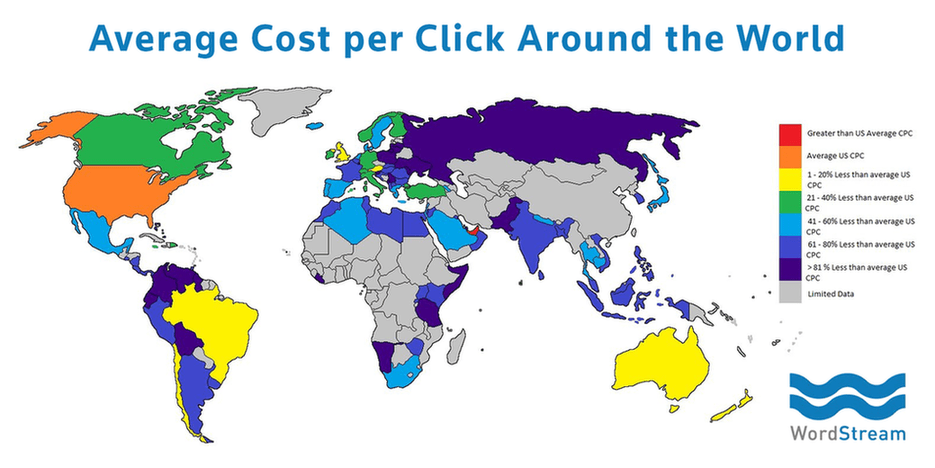
You see, advertising costs can easily differ five times.
This translates into five times more leads for the same budget and, assuming the sales pipeline constant, five times more revenue.
Would you like to get five times more revenue for the same marketing budget?
And sometimes running even a very simple campaign in countries with lower costs and less competition you may get much better business results at a reasonable cost.
What not to like about it?
Should you really go to the Scandinavian market where lead can cost around 100 Eur or perhaps as well, you can go to a large CEE country where lead costs around 12 Euro?
I leave the answer to you.
Managing different pricing tiers differently
Not all deals are the same, even if individual users and large corporations can use the product.
When deciding about lead generation, companies should use different marketing and success management approaches to different pricing tiers.
You would probably be happy to pay thousands of Euros for a qualified lead that can lead to sales to enterprises of thousands of users. You would also be eager to invest in pre-sales engineering support and extensive success management.
From another hand, you might not be interested at all to invest the same money in landing a single freelancer, and the most you could afford is to send such leads to self-service options to support their product use.
To which markets to expand then?
Start with the question if the local market is limiting your growth. If that is the case, I would recommend first go to less expensive markets and making sure you quickly learn and optimize your Digital Sales Engine.
Consider Canada and Ireland if you want to go to English-speaking markets before going to the US and the UK.
Once you have learned enough to know what works best, move to more expensive markets and employ more advanced marketing.
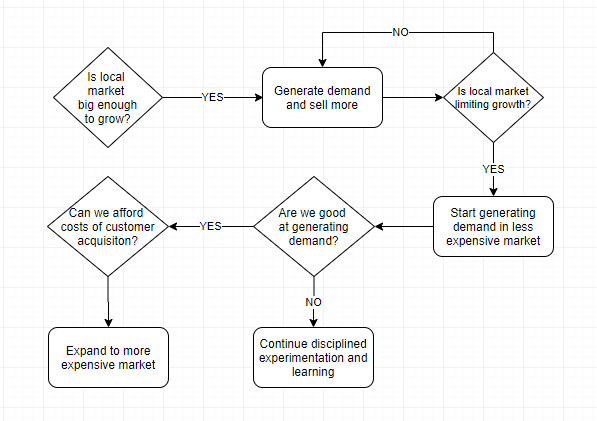
Do more in-depth buyer research, detailed market and competition research. Invest in more AB testing and consider purchasing the target account list.
Remember that the more expensive the target market, the more effort and money you must spend on research and planning. And more external expertise is required.
This is because every small improvement would produce disproportionate results in revenue, as we saw in pipeline examples.
Conclusion
Digital marketing is the best way to start international expansion.
But it is also some of the fastest ways to spend money with little to show for it.
I recommend involving specialists early on when you are only considering expansion. This will save you lots of time, money and reduce business risks.

